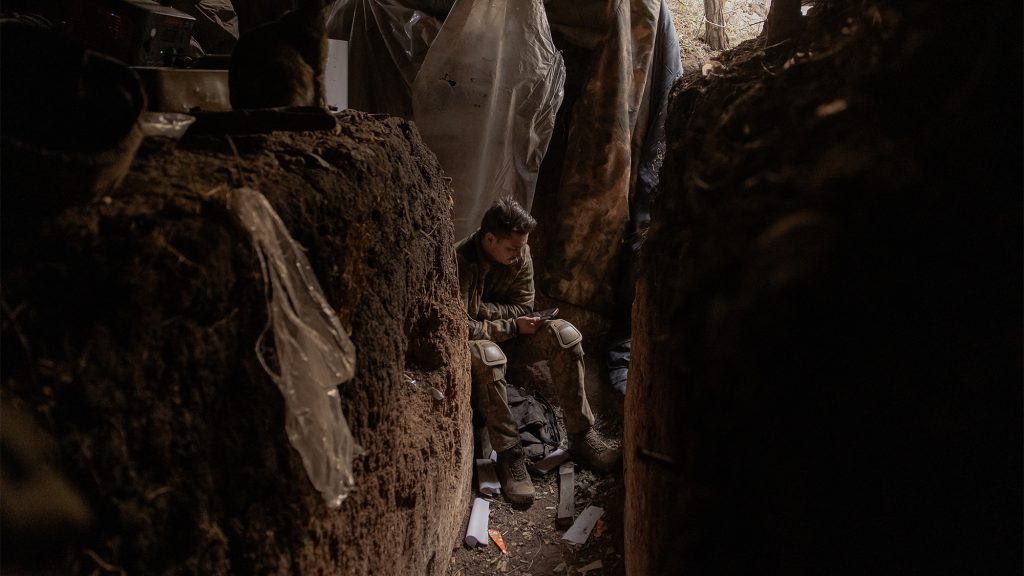The Ukrainian counteroffensive, eventually postponed to the summer, was awaited with serious expectations. Ukraine had long been preparing for the fight: the country’s military and political leadership spent the first half of the year accumulating sufficient amounts of personnel and equipment, and their successes in the previous year’s autumn confirmed that the Ukrainian armed forces might actually be able to leverage the technological superiority offered by Western military technology. While the Ukrainians did not publicly disclose their military and political objectives, most analysts anticipated that the country would aim
Ukraine would finally launch the operations originally expected in the spring on the 4th of June, as there were significant delays in training and the transfer of Western military technology. Contrary to the optimistic expectations of a swift breakthrough, the first visible element of the counteroffensive was in the Zaporizhian region, Orikhiv, where reports immediately pictured a stalling offensive. Images of Western armour bogged down in minefields circulated the global press. While the failure was exaggerated by the Russian propaganda machine, eagerly mocking the capabilities of Western military technology, hopes of a rapid breakthrough undeniably dissipated within a mere few weeks. From that point onwards, Ukrainians managed their forces more cautiously, but instead of the fast-paced, mechanized warfare that contributed to their success in Kharkiv the previous year, the counterattack slowed into grinding battles of attrition, playing more into Russia’s hands.
Valerii Zaluzhnyi, Commander-in-Chief of the Ukrainian Armed Forces, evaluated the current state of the war and the summer offensive in several publications at the beginning of November. The general stated that they had indeed prepared for a swift breakthrough, aiming to quickly gain territories in Zaporizhia and Kherson through agile, mechanized warfare.
This is at least partially due to the setting-in of the infamous “rasputitsa” (literally translated as roadlessness) transforming the plains – constituting approximately 70 per cent of Ukraine’s territory – into a contiguous sea of mud by the end of October at the latest. The harsh terrain would also pose staggering obstacles for the armies of Hitler and Napoleon way back in time. Since tracked vehicles get stuck in the mud, armour can practically only move along the network of asphalt roads during such conditions, turning valuable military equipment into sitting ducks for the enemy. This means that
We evaluated the reasons behind failure of the Ukrainian counterattack, its lessons, and the future prospects of the conflict turned into stationary warfare with Tamás Csiki Varga, senior research fellow at the National University of Public Service’s (NKE) Institute of Strategic and Defence Studies.
“Such operations haven’t really been carried out since WWII”
The timeframe spoken of during the summer offensive has closed. Until the winter cold sets in – provided there will be a serious winter in the first place – I don’t see too much chance for mobile operations. However, whether large-scale, offensive operations are possible during winter is a different question altogether. From the Ukrainian perspective, the strategic initiative has once again been lost,
assessed the expert, who believes that the Ukrainian operations were thwarted not by the rainy season but by the deeply entrenched Russian defences and the lack of air superiority. In other words, the decisive factor was not the timeframe diminishing week-by-week with the approach of the rasputitsa, but rather, the initial conditions for a Ukrainian strategic breakthrough were not met from the get-go. “Obviously, neither the West nor Ukraine had anticipated the well-established Russian lines to be so hard to crack – if they had, they wouldn’t have embarked on such operations in the first place”, Csiki Varga noted.
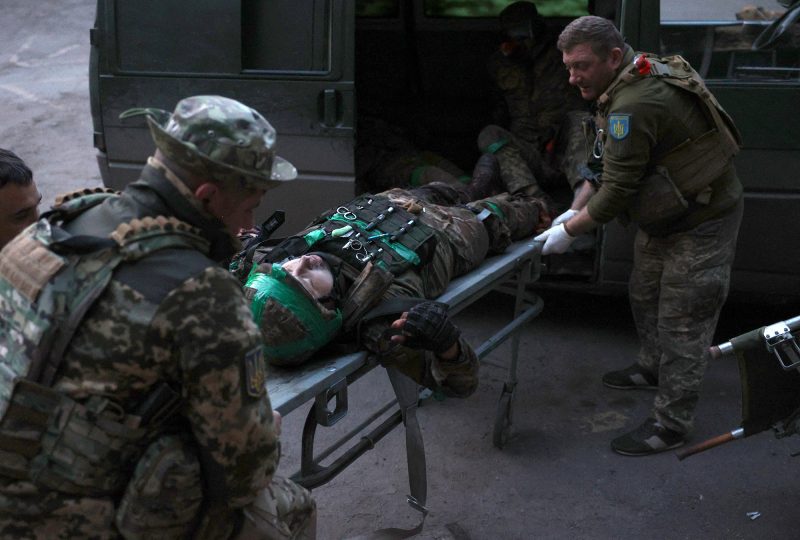
One of the main obstacles of the counteroffensive was the Russian defensive line known as the Surovikin Line, named after the former commander of the “special military operation”, Sergey Surovikin, who was removed from his position in January and later also dismissed from leadership of the air force in August (Surovikin, also known as the „Armageddon General” for his ruthless bombings in Syria, supposedly had prior knowledge of the Wagner Group’s June rebellion, which led to his temporary disappearance from the public eye – he first went under house arrest and then unexpectedly appeared in Algeria).
The Surovikin Line consists of tiered defensive positions, tank trenches, minefields, dragon’s teeth (pyramid-shaped concrete structures deployed in two lines, functioning as tank obstacles), and trench systems, covering nearly the entire length of the 1000-kilometer front. For comparison, the total east-west extent of Hungary is 528 kilometres.
Western powers likely not only provide intelligence information to the Ukrainian military but may also assist at the level of military planning. However, the real strength of the Surovikin Line was not adequately assessed. Regarding this, Csiki Varga mentioned that based on satellite observations, Western intelligence knew of the general structure and main elements of the defensive line. However, the Russians planted an immense number of mines along the frontline. The first line of Russian defence consists of technical obstacles and minefields. Most Ukrainian assaults were thwarted already at this point— had they succeeded penetrating these first lines, larger areas may have been opened up, allowing for faster progress.
The adequate process of penetrating such deeply entrenched defences is known as a „forced combined arms breakthrough.” In such an operation the air force, artillery, mechanized forces, engineers, and infantry collectively engage and tie up the defender’s capabilities – primarily firepower; and eliminate obstacles preventing advance and breakthrough. However, such operations have not really been executed since World War II by anyone,
Csiki Varga explains.
But landmines the Russians had plenty of; which assisted greatly in impeding the Ukrainian advance.
This is where the lack of Ukrainian air support comes into the picture. Ukraine has stockpiled a great deal of diverse Western military equipment, but the absence of fire support from the air was sorely felt throughout the entire counteroffensive – for example, during the clearance of minefields. Anti-air systems and air forces are essential to neutralize the opposing air force (today this also includes drones), and to keep Russian defensive positions and mobile forces tied up and occupied by having them under constant fire. This strategy prevents defenders from attacking the technical units tasked with clearing landmines. This kind of offensive manoeuvre is further assisted by artillery via concentrated barrages.
Like any piece of equipment, mines also come with a “user manual” of sorts: depending on the type, recommended planting density might be one tank mine per four square meters. Since tanks are relatively large, a denser planting of mines would be wasteful. However, in certain areas of the Ukrainian front, the Russians planted four to five times this recommended density, making demining more challenging and rendering crossing impossible. Not even satellite reconnaissance could adequately prepare the Ukrainians for this.
According to Csiki Varga, the manoeuvrability of the Russian reserve forces and the Russians’ ability to perform counterattacks in the event of Ukrainian territorial gains was also underestimated. Experience shows that, in addition to their static defences, the Russian military – despite issues with ammunition supply and low morale – has been able to implement manoeuvring defence operations when necessary.
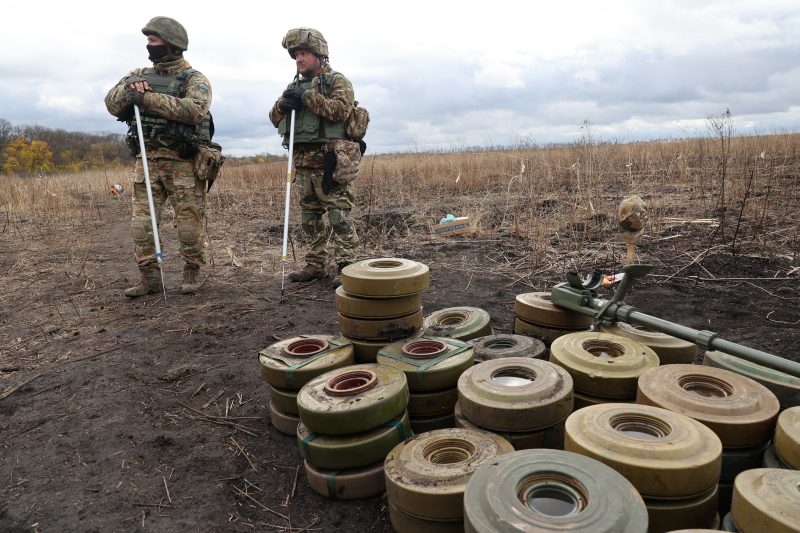
“The Ukrainians are pushed back one step at a time”
In the first few weeks, the Ukrainians tested and assessed the Russian defences, probing for potential weak points. In June, five to six of these experimental directions were opened, which in the end dwindled to two main offensive routes.
One was in the Robotine region in Western Zaporizhia. Located 30 kilometres from here is the strategic city of Tokmak, situated along a supply route that provides dry land connection to the Crimean Peninsula, halfway towards Melitopol. On this segment of the frontline, a glimmer of hope for territorial gains appeared in mid-August, as the Ukrainians managed to penetrate beyond the first defensive line.
This was the deepest penetration into the Russian defensive lines. Based on available mapping analyses, the Ukrainians were able to create a wedge of approximately 10 by 10 kilometres. The issue is that there are still various defences left up to a depth of 10-15 kilometres,
Csiki Varga explains. The second line of defence consists of trenches and static fortifications. Unfavourable terrain conditions posed another reason why Ukraine couldn’t build quickly on its initial successes. In this area, fighting continues.
It’s important to note that even if the Ukrainians were to somehow breach the second line – as they managed in a 2-3 kilometre-long stretch west of Verbové – they still have to contend with Russian reserve forces occupying the third defensive line before finally engaging in urban warfare to take the fortified city of Tokmak.
The other main direction was in the Velyka Novosilka region, on the border between the regions of Zaporizhia and Donetsk. Had the Ukrainians managed to breach the defensive belt there, it could have severed a much larger land area, essentially cutting off the entire southern land bridge from Donbas and the Russian homeland. The railroad passing through the Mariupol–Berdiansk–Melitopol axis was crucial for supplying the Russian forces stationed in the occupied areas of Kherson and Zaporizhia. Therefore, the disruption of this supply route might have been the objective. However, the Ukrainians couldn’t even come to close to achieve a serious breakthrough in Velyka Novosilka, either. Csiki Varga notes that
Contrary to Robotine, advancing in the Velyka Novosilka direction is impeded by the challenge of numerous small and large watercourses running north to south, making traversing complicated, and slowing down ground operations – it is for this reason that the main effort became concentrated in the Robotine area over time.
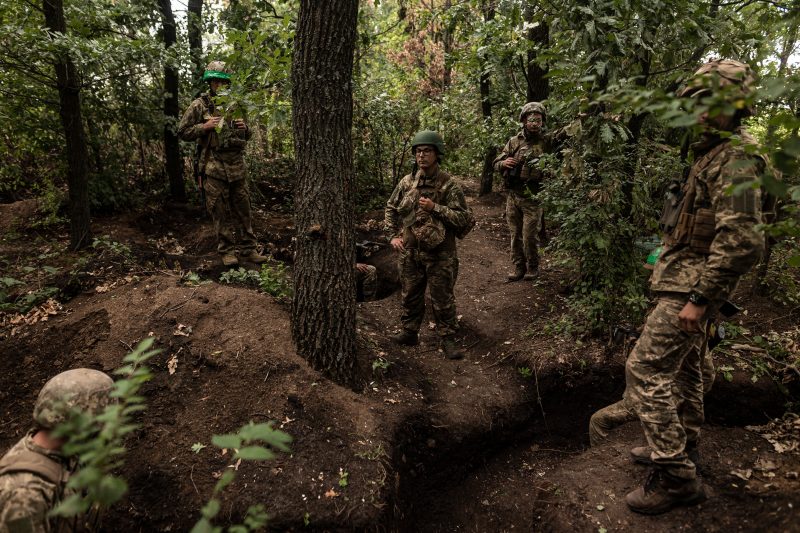
Around Urozhaine, in the southernmost areas of the territories regained by the Ukrainians, heavy fighting still continues.
In addition to defensive operations in the south, the Russian military is conducting offensive activities of varying – sometimes high – intensity along almost the entire length of the front. This serves two purposes: first, to divide and stretch the Ukrainian attacking forces, and second, to continue the slow daily advance averaging 50–100 meters.
We aren’t talking about massive mechanised operations here. Typically, these manoeuvres occur in fortified terrain, including smaller or larger towns, where the Ukrainians are pushed back one step at a time,
Csiki Varga says, adding that if the war continues at this pace, the Russians won’t get around annexing the entirety of Donetsk Oblast even by the end of the next year.
Successes of the Ukrainian counteroffensive
The Russian naval base in Sevastopol on the Black Sea has been a crucial component of the Russian military machinery since the very beginning. It was the Russian warships departing from Sevastopol that blockaded the Ukrainian coastline and launched cruise missiles at Ukrainian cities and infrastructure.
Since the start of the Ukrainian counteroffensive, the Ukrainians have conducted multiple strikes on the Russian airbase on the Crimean Peninsula, the Sevastopol headquarters of the Black Sea Fleet, the Zaliv shipyard, and the Kerch Bridge, which, until 2022, was the sole land link between the Russian Federation and the peninsula unilaterally annexed in 2014. Ukrainian forces also reached the military port of Novorossiysk east of Crimea in the Krasnodar region: images depicting the Russian landing ship Olenegorsky Gornyak listing to its side circulated on the internet. The Ukrainian efforts were significantly aided by the British-French jointly developed Storm Shadow cruise missiles, boasting an effective range of 500-550 kilometres, applying additional pressure on Russian military infrastructure behind the front lines.
Despite being left essentially without a navy in the early days of the war, the Ukrainians managed to prevent the Russians from achieving their presumed goal of encircling Ukraine on land, leaving the country without a single port. „The idea that Ukraine would be pushed out of the Black Sea region as a maritime state did not become reality” – emphasized Csiki Varga. With substantial Western military and technological assistance, Ukraine has since acquired the means to target Russian stationary targets, ports, and ships with both missile armaments and drones. This has significantly constrained Russian freedom of movement and caused substantial damage to military infrastructure and assets.
The Russians have suffered sensitive losses at least six-seven times. They lost valuable positions and naval units, including the Black Sea flagship, the cruiser Moskva, as well as several landing ships. These were the ones the Russians could have used to carry out a major landing operation in Odessa,
the expert clarifies.
While these Ukrainian strikes do not decisively determine the war, they represent a sensitive loss for Russia, and the remaining valuable military assets have been withdrawn to ports further away from Sevastopol. Csiki Varga emphasized that Ukraine, lacking a navy, can hardly seize military control over the Black Sea. However, Russia aimed to prevent Ukraine from delivering grain to the global market by unilaterally cancelling the Black Sea grain agreement. Nevertheless, they failed to achieve total control over the trade routes, despite continuous attacks on Ukrainian port infrastructure since July and threats to consider commercial ships as potential military targets—sinking ships from third countries would have severe diplomatic consequences.
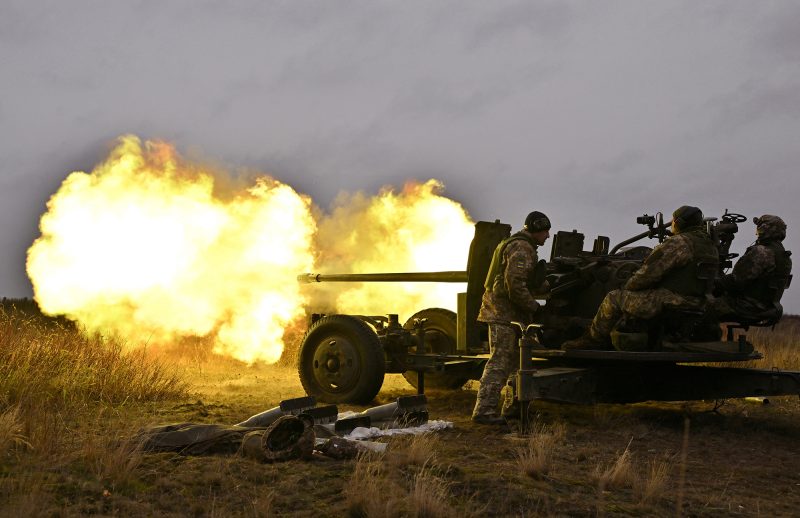
Avdiivka is the new Bakhmut
Before the war, Avdiivka was a small east-Ukrainian town with a population of 32,000. But, much like Bakhmut, the town near Donetsk holds a symbolic dimension in the context of the conflict.
According to some reports, Russia has concentrated around 30,000 troops (equivalent to 5 brigades) near Avdiivka, and the city is now effectively surrounded by the Russians on three sides, effectively lying in a so-called ‘pocket’. The Russian objective appears to be the encirclement of the city, likely intending to trap Ukrainian defenders. In recent months, exceptionally intense fighting has taken place around the city, resulting in significant Russian losses in both personnel and military equipment (according to Zelensky, a brigade’s worth of Russian forces has already been lost in the fights).
According to Csiki Varga, the capture of Avdiivka might not hold great significance from a strategic standpoint. However, as seen in the case of Bahmut, this may not necessarily prompt the Russians to apply moderation. Official Russian communication suggests that taking Avdiivka is necessary because it allows Ukrainians to target Donetsk, located about ten kilometres away from the city. However, according to Csiki Varga, Ukrainian artillery can comfortably target Donetsk just as well from behind the city.
Politically speaking, Avdiivka’s potential capture would be another success in the war yearbook, and the Ukrainians are capitalizing on the opportunities presented by the terrain, gradually wearing down Russian forces. We are practically seeing Bakhmut all over again. Large Russian forces are attempting to cut off the city’s supply lines through infantry assaults from the north and northwest. So far, they haven’t succeeded in doing so,
the expert states, adding that much like Bakhmut, the Russians will likely take control of the city sooner or later. In this segment of the front, the next major obstacle could be the Sloviansk-Kramatorsk fortification system, where the Russians might be bogged down for up to a year if they continue at their current pace. According to Csiki Varga, the last time the Russians encountered such deep-running, fortified Ukrainian defences was in the summer of 2022, near Severodonetsk.
There was a phase during the siege of Avdiivka when the Russians attempted a pincer movement from both the north and south simultaneously. However, the Ukrainians managed to track Russian troop movements, stripping the manoeuvre of the element of surprise, causing it to fail. Since then, the Russians have been making periodic attempts alternating between the north and south, advancing a few hundred meters to a kilometre each week.
One of the keys to the city is represented by the much-discussed coke plant. The Ukrainians have established themselves on the plant’s spoil tip, which is essentially a massive hill providing a clear view of the city and the surrounding area. This advantageous position enables precise artillery strikes against the attacking Russians. “As long as the Russians don’t capture this, Avdiivka can be held” – summarised Csiki Varga.
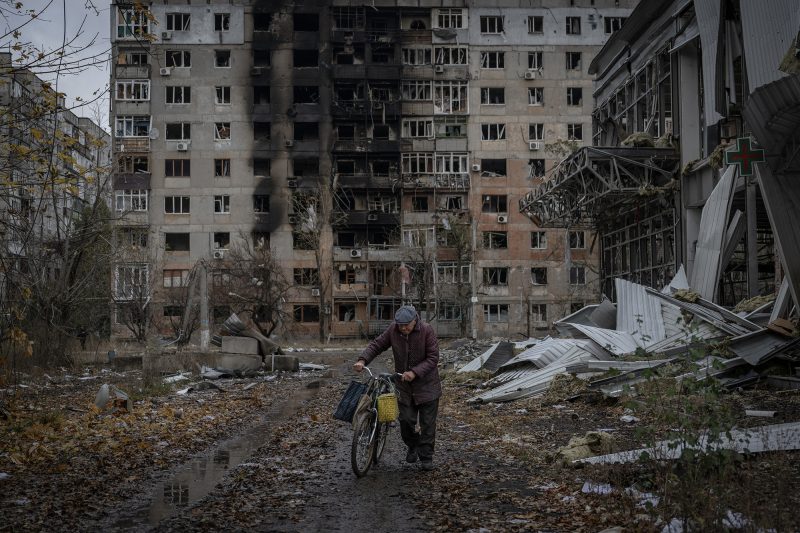
In what shape are the opposing parties awaiting the war to continue?
The Ukrainians prepared for the counteroffensive with nine mechanised brigades deploying Western heavy arms and equipment – including British Challenger 2 and German Leopard 2 tanks, American Bradley infantry fighting vehicles, and French AMX-10 RC reconnaissance vehicles – a standard brigade’s strength is roughly 5000-5500 personnel. The Ukrainians had three other brigades in addition, so they had a total capacity of 50-60 thousand personnel for the counteroffensive, the majority of which had received Western training.
Csiki Varga explained that the counteroffensive started in June with three brigades, the next three being deployed two to three weeks later. Later, soldiers on the frontline were rotated continuously. The Russians tried to divide Ukrainian attention by attacking in the Bakhmut region, the Svatove-Kreminna sector, and even in the far north, near Kupiansk, to tie up Ukrainian forces.
Most, if not all, of the twelve brigades were involved in the operations. The first three likely suffered significant losses in both personnel and equipment. It is less clear for the second three and the remaining brigades. However, they still have sufficient strength to continue defending, and smaller-scale attacks with local significance are still being carried out,
Csiki Varga assesses, noting that he doesn’t expect any major offensive operations on the Ukranian side until spring. He went on to add that at the beginning of the counteroffensive, there were visible and relatively large technical losses. The few dozen vehicles lost back then have since been by and large replaced by Western deliveries. It is important to note that even if the military hardware is lost, based on image and video documentation, the operating personnel typically survive these incidents – for example no corpses were seen in the case of vehicles hitting mines near Orikhiv.
Meanwhile, the Russians are advancing at a snail’s pace, at a terrible cost in human lives: in the positional warfare near Bakhmut and in the ‘pocket’ around Avdiivka, the Russians occasionally lose 1000–1200 personnel per day.
This is a very large number, 30,000 Russian soldiers are killed or severely wounded over the course of a month,
the expert states. However, there is no insight into the distribution between regular forces and the private military companies among the fighting Russian units. From time to time, even the low fighting value personnel are replenished. Reports suggest that recruitment in prisons has not stopped, which is not surprising given that the Russian infantry assaults used in Bakhmut and Avdiivka do not require extensive training. The essence of this human wave tactic, familiar from World War I, is to quantitatively overwhelm the defenders. Additionally, Russia is now rotating frontline soldiers with conscripts as well, which a socially very sensitive decision.
Nevertheless, to capture large cities with hundreds of thousands of inhabitants, the Russians need to break through the front lines. Therefore, in the short term, the capture of Zaporizhia, Poltava, and Dnipro, currently held by Ukraine, is as unlikely as a significant Ukrainian offensive. It is quite telling that
Csiki Varga does not believe that Ukraine is approaching the limit of its mobilisation capacity and lacks able-bodied men to send to the front (nor does it seem that Ukrainian combat morale has diminished). As an example, he mentioned the loss ratios from World War II, which were well above the current Russian and Ukrainian levels for major belligerents, such as the Soviets and the Germans.
It’s another matter that since World War II, neither side has suffered losses of this magnitude. The Russian losses exceed those in all the wars the country has fought since World War II. Ukraine, on the other hand, has not experienced a war since gaining independence,
he adds.
Next year might be about waiting, 2025 could see the end of the second phase of the war
According to Csiki Varga, a calmer period can be expected during the winter when both sides can “refresh”. He also does not believe that significant offensive operations should be expected in the coming year. There is still no indication of how the Ukrainians could break through the Russian defence line, so the stalemate could persist as long as the Ukrainians lack a potent air force. At the same time, there are currently no tools or opportunities on Russia’s part for a large, mobile military operation. In the expert’s view,
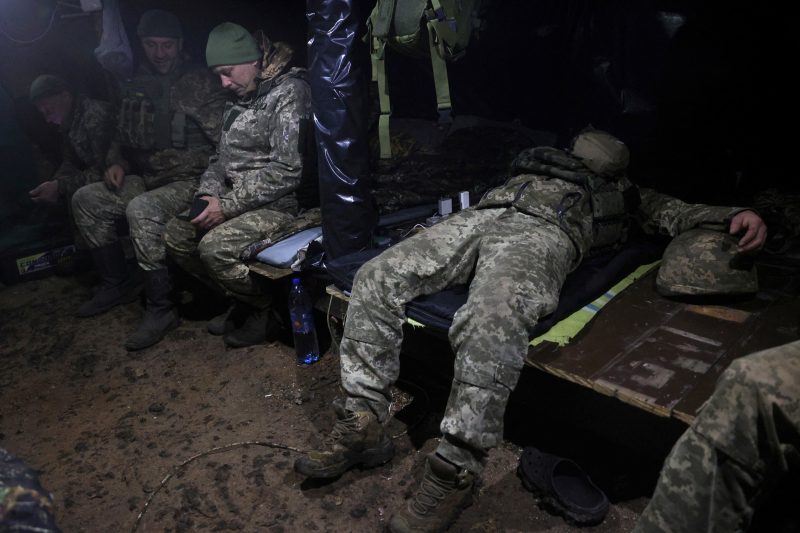
Not only in Russia and Ukraine but also in the European Union and the United States, elections are taking place next year. It is currently unclear whether the unwavering support of the USA will persist in the event of a Republican victory – however, the real value of this support must be assessed correctly. While the $76.8 billion provided to Ukraine may seem very large, this amount represents only seven per cent of the U.S. defence budget and just over one per cent of the total federal budget. Furthermore, weakening Russia’s military capabilities is an American national interest.
Csiki Varga urges caution when speculating on whether the American-made F-16s can change the situation. In May, the United States granted permission for its allies to transfer F-16s to a third party, practically meaning Ukraine. Several countries took advantage of this opportunity: the Netherlands provided 42, Denmark 19 F-16s, and Sweden offered 16-18 Gripen fighter-bombers. There is no reliable information about when the new capabilities of the Ukrainian military may appear on the frontlines – in addition to the training of pilots and the establishment of logistical and operational support, a significant challenge is the need for a substantial amount of precision ammunition for the fighter jets.
Csiki Varga emphasized, however, that
in fact, they are unlikely to be able to support combat activities on the front with the F-16s next spring. In his view, the jets don’t seem to be intended for that purpose anyway, but to strengthen Ukrainian deterrence capabilities in the post-war situation.
As for Western public opinion, the expert observes a growing sense of apathy. On one hand, the war has been going on for nineteen months; and on the other, the Palestinian-Israeli war in Gaza broke out in the meantime, dividing people’s attention. However, Western interest continues to lie in ensuring that the Ukrainians can defend their remaining territories and damage Russian military capabilities. This is most explicitly expressed in the U.S. strategic goal related to the war, which announced the “strategic weakening” of Russia. Thus, the West will surely maintain enough support to ensure that Ukrainians can at least carry on with the defence.
“Offense is another question. The main lesson of 2023 may be that the Ukrainians will not be able to recapture the lost territories”, Csiki Varga notes, who believes that many people in Europe do not assess the Russian-Ukrainian war appropriately.
By grinding down Russia’s traditional military capabilities, the Ukrainians are fighting for Europe’s security, as in five or eight years’ time, they won’t have a military machine powerful enough to lay the foundation for Russian imperial ambitions.
“The lesson of the year 2023 may be that the closing of the second major period of the war has begun. The first period was the one from 2014-2015, followed by a long, seven-year hiatus. The second is the period starting with the 2022 Russian escalation, the end of which, based on currently visible trends, I would place in 2025 at the earliest.”
A ceasefire or a calmer state is out of reach for 2024
Csiki Varga projects, emphasizing that a similar slowdown could occur as after the 2015 Minsk agreements.
The expert does not believe that the warring parties will be capable of greater efforts in the near future, making it unlikely to reach a decisive conclusion on the battlefields:
On the Russian side, the political commitment to continue the war persists, but capabilities are limited. On the Ukrainian side, after this year’s unsuccessful counteroffensive, the coming spring or summer may be interesting, as they might consider another attempt before the U.S. presidential election. However, achieving the ultimate Ukrainian war goals – that is, regaining significant territories – currently seems unrealistic from a military perspective.
